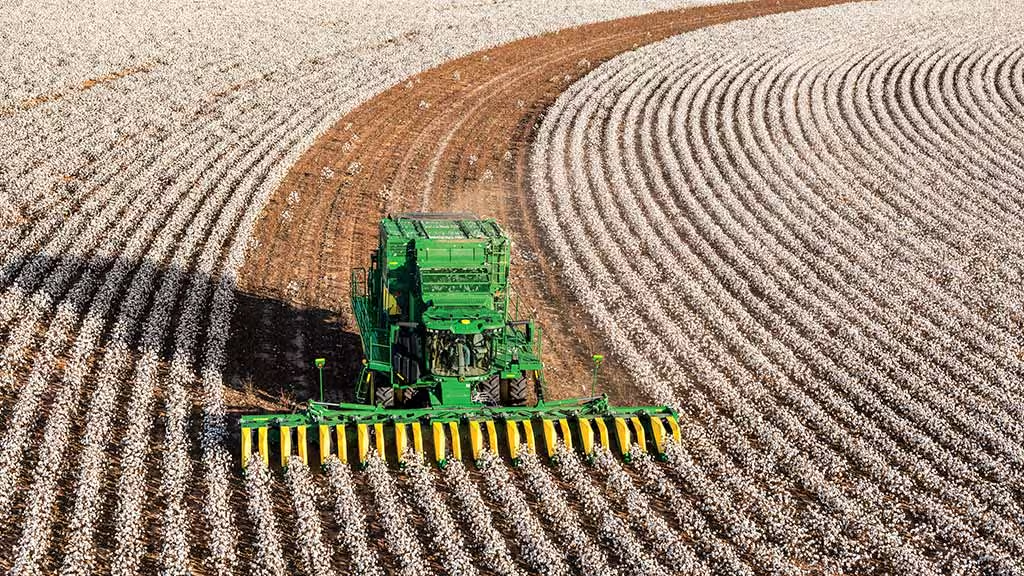In the evolving landscape of agriculture, mechanization has played a pivotal role in improving efficiency, reducing labor costs, and increasing crop yields. Among the many innovations that have reshaped farming, the cotton picker tractor stands out as a transformative force in the cotton industry. As the demand for cotton continues to rise worldwide, the importance of mechanized cotton harvesting cannot be overstated. This article explores the historical evolution, technological advancements, operational benefits, and future potential of cotton picker tractors in modern agriculture.
A Brief History of Cotton Harvesting
Before mechanization, cotton harvesting was an arduous, labor-intensive process. Farmers and laborers picked cotton by hand, often spending long hours in the fields to collect enough to make a living. This manual method not only limited productivity but also relied heavily on seasonal labor, making it inefficient and costly.
The advent of the cotton picker tractor in the mid-20th century revolutionized the industry. The earliest models, introduced in the 1940s and 1950s, were single-row machines that could pick cotton more quickly and with less labor than traditional methods. Though initial adoption was slow due to the machines’ high cost and complexity, over time, improvements in design, affordability, and reliability spurred widespread usage.
Understanding the Cotton Picker Tractor
A cotton picker tractor is a specialized agricultural machine designed to harvest cotton bolls from the plant with minimal damage and high efficiency. These tractors come in various configurations, but they generally fall into two categories:
- Spindle Pickers – These use barbed spindles to pluck cotton from open bolls. The spindles rotate at high speeds and transfer the cotton to a storage basket via air suction.
- Strippers – These machines strip both open and unopened bolls, along with plant debris, which is later separated in a gin.
Modern cotton picker tractors are equipped with advanced systems such as GPS navigation, yield mapping, moisture sensors, and onboard diagnostics, making them smarter and more efficient than ever.
The Importance of Cotton Picker Tractors in Modern Farming
1. Increased Efficiency and Productivity
One of the most significant benefits of the cotton picker tractor is its ability to drastically improve harvesting speed and productivity. Where manual labor could harvest a few hundred pounds of cotton per day, modern cotton pickers can harvest thousands of pounds per hour, covering several acres in a single day. This efficiency allows farmers to complete harvesting within optimal time windows, preserving cotton quality and maximizing profits.
2. Reduction in Labor Costs
With the global shortage of agricultural labor, especially during peak harvesting seasons, cotton picker tractors provide a reliable solution. Mechanized harvesting eliminates the need for large seasonal labor forces, helping farmers cut down significantly on labor expenses and logistical challenges associated with manual hiring.
3. Improved Harvest Quality
Cotton picker tractors are designed to minimize plant damage and reduce cotton loss during harvesting. Advanced models ensure cleaner harvests with less contamination from leaves, stems, or dirt. This not only improves the quality of the raw cotton but also enhances its market value and reduces the burden on cotton gins.
4. Consistency and Reliability
Unlike human labor, machines don’t tire, need rest, or face performance inconsistency. Cotton picker tractors can work long hours under varying weather conditions, ensuring that harvesting stays on schedule regardless of external challenges.
5. Data-Driven Farming
Today’s cotton picker tractors are not just harvesting tools—they’re data hubs. Equipped with sensors and IoT technology, these machines gather real-time data on yield, plant health, and soil conditions. Farmers can analyze this data to make informed decisions for future planting, fertilization, and irrigation strategies.
Technological Advancements Shaping the Cotton Picker Tractor
The evolution of the cotton picker tractor continues with cutting-edge innovations:
- Autonomous Operation: Companies are developing autonomous picker tractors that can operate with minimal human intervention, guided by GPS and AI.
- Telematics: Remote monitoring systems allow farmers to track performance, maintenance needs, and operational efficiency from a smartphone or computer.
- Modular Designs: Modern pickers are designed for easy upgrades, allowing farmers to integrate new technologies without purchasing new machines.
- Eco-Friendly Engines: With growing emphasis on sustainability, newer models are being built with fuel-efficient engines and reduced emissions.
Economic and Environmental Impact
Economic Advantages
While the upfront cost of a cotton picker tractor is significant, often ranging from $600,000 to over $800,000, many farmers view it as a long-term investment. The labor savings, combined with increased productivity and higher cotton quality, often justify the cost over several harvests. Additionally, leasing options and government subsidies in some regions make this technology more accessible to smaller farms.
Environmental Considerations
Mechanized harvesting can also contribute to more sustainable farming practices. By reducing the number of field passes needed, cotton picker tractors help lower fuel consumption and soil compaction. Moreover, precision technology ensures that harvesting is done efficiently, minimizing waste and promoting better land stewardship.
Challenges and Considerations
Despite their benefits, cotton picker tractors are not without challenges:
- High Initial Investment: The cost barrier remains a major concern, especially for small and medium-scale farmers.
- Maintenance Needs: These machines require regular maintenance and skilled operators to function optimally.
- Skill Gap: The complexity of modern machinery necessitates training for farm workers, creating a learning curve for many.
- Regional Suitability:Mechanized harvesting may be less feasible in some developing regions with fragmented land holdings or uneven terrain.
The Global Outlook for Cotton Picker Tractors
The global adoption of cotton picker tractors is on the rise, particularly in countries with large-scale cotton production such as the United States, Australia, Brazil, and India. As technology becomes more affordable and adaptable, even developing countries are exploring mechanization to improve agricultural output.
Manufacturers like John Deere, Case IH, and CNH Industrial continue to innovate, offering increasingly efficient and environmentally conscious machines. These advancements are expected to play a crucial role in meeting the rising demand for cotton in textiles, medical supplies, and industrial products.
A Pillar of Modern Cotton Farming
The cotton picker tractor represents more than just a machine—it embodies the progress and potential of modern agriculture. By blending mechanical power with intelligent systems, these tractors enable farmers to meet global demands sustainably and profitably. As the agricultural sector continues to face pressures from climate change, labor shortages, and market volatility, technologies like the cotton picker tractor will be instrumental in shaping the future of farming.
For those in the agricultural industry, investing in or learning about cotton picker tractors is not merely about upgrading equipment—it’s about staying competitive, efficient, and resilient in a rapidly changing world.






